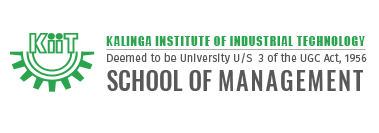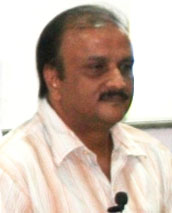
2nd National HR Conclave
August 20, 2011Mr. Rajesh Vidyasagar, Director, HR Client Services at World Bank
October 29, 2011 Topic: Disaster Management
Topic: Disaster Management
Date: September 17, 2011
Speaker Profile :
Mr. Das is a 1982 cadre Indian Forest Service officer. He has served in many responsible capacities in his career span of over 29 years. He was the Managing Director of Orissa State Disaster Management Authority. Prior to his current assignment, he was Chief Conservator of Forest, Bhubaneswar Division, Orissa.
Details :
The Volunteers of NSS Wing of School of Management, KIIT University (KSOM) had organised a Knowledge Seminar on Disaster Management on 17 September, 2011. Sri Sidhanta Das, IFS, Member Secretary, Orissa State Pollution Control Board had delivered a talk on “Disaster Management”.
Mr. Das began by defining a disaster. Dictionary meaning of “disaster” may be taken as: “a sudden accident or natural event that causes great damage or loss of life and property”.
Disaster is a simple equation of hazard plus vulnerability. When people become vulnerable to hazards disaster takes place. Disaster management is to empower the mankind to bravely combat the threat of hazards. Hazards are inherent in life. They will continue to exist. No one can be free from hazards. But vulnerability to hazards is owing to causes made by mankind itself. In disaster management, the stakeholders involved are generally, the Community, Civil Society, External Agencies and the Government.
Different Stages of disaster:
The role of stakeholders at different stages of disaster is as follows:
- Before: During this stage the disaster has actually not occurred so, the role of stakeholders here is to insulate and empower the vulnerable people and try to make them invulnerable so that they can manage or bravely withstand the disaster. To educate people and formulate strategies to make them fit to combat.
- During: In this stage the disaster is actually taking/taken place so at this stage the community is the victim and is facing the disaster, so in this stage people in the community should help each other out. They can save each other’s lives and property from the disaster.
- Immediately after: In this stage the role of the civil society and the government becomes prime because at this stage the community has been affected by the disaster and is in a disturbed condition.



